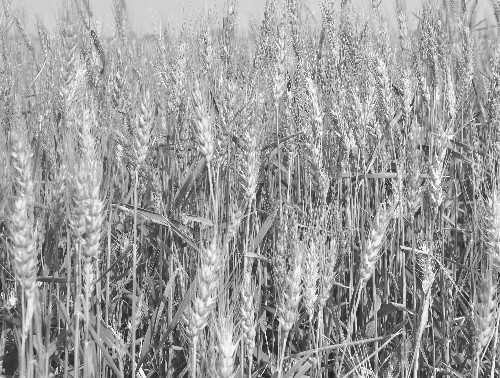
If one gets the chance to travel across Canada, he/she could get the chance to cruise through the prairie provinces of Alberta, Saskatchewan and Manitoba in which wheat farmlands dominate the area seemingly touching the horizon.
Canada is one of the major countries that provided relief food aid for Ethiopia in the advent of the food shortage and the resultant death of millions that Ethiopia had experienced in 1984.
I visited some of those areas about ten years ago and a farmer recited what other farmers were saying and he noted that farmers used to say that ‘as long as it rains in Canada there is no problem’. This dependency syndrome still lingers around in chronically food deficient areas of Ethiopia.
Wheat is an important staple food crop in Ethiopia. It is a staple food in the diets of several million.
Ethiopians, providing about 15 percent of the caloric intake for the country’s over 100 million population (FAO 2015a), placing it second after maize and slightly ahead of teff, sorghum, and enset ,
which contribute 10-12 percent each (Minot et al., 2015).
Wheat is also the fourth cereal crop produced by close to 5 million smallholder farmers, which makes about 20 percent of all small farmers in the country. It accounts close to 17 percent of acreage of arable land and a fifth of all cereal food crops produced in the country in 2013/14 (CSA, 2013/14a). After South Africa, Ethiopia is the second largest producer of wheat in sub-Saharan Africa (FAO 2015b).
The production of wheat by small farm households has been conducted in Ethiopia for thousands of years but due to lack of appropriate technology which also involves storage, farmers have been unable to even feed their own families let alone having surplus for sale.
However, Ethiopia is now striving towards having her own lowland prairies without any need for rain after more than three decades. The government has embarked on wheat production by irrigation, the first of its kind in Africa. Huge irrigation scheme is already in progress in the Afar region with about 4,000 hectares of irrigated land while similar project is in the making in Awash Valley and Gode area on Wabi Shebele River.
With the current progress, Ethiopia could markedly minimize its import of wheat for market stabilization and safety net programs in about three years.
The government is annually expending huge amount of foreign currency for the import of wheat each year and with the current shortage of foreign currency, it would be very difficult to meet the growing need for bread across the cities and towns in the country.
This situation will certainly be reversed after a couple of years as more irrigation schemes producing more wheat. One could also think of the more positive macroeconomic role wheat can play in further promoting food supply chain system in the country at two major levels. First wheat production creates a cost recovery scheme and import substitution which will enable the country to save billions of dollars every year. Second price reduction triggered by bumper harvest of wheat will enable families in this country to save money for nutritional diversification and supplementation as well as the fight against both infant and old age malnutrition.
Government private sector partnership and cooperation is highly expedient for promoting agriculture sector in Ethiopia in the transition from rain-fed agriculture to promotion of irrigation based and diversified agriculture.
Ethiopia has no solid reason to import wheat from abroad, particularly when the country is endowed with rich arable land and enough irrigable rivers. The production of wheat by irrigation should not be left to the public sector only. It would be very important to selectively engage foreign and local investors on targeted agricultural commodities both for local consumption and for export.
Wheat production needs to enter a sustained supply chain system in which home-grown industries can be supplied with wheat so that they can produce value-added food products that can be afforded by all levels of pockets in the overarching program for food security.
By introducing modern technology, small-holding farmers can be supported to produce marketable and quality wheat so that they can generate income through wheat production by utilizing small-scale irrigation systems.
Ethiopia’s agricultural research centers can make researches on new varieties of wheat suitable for arid areas of the country and suitable for irrigated wheat farms. As I have said earlier, strong linkage between wheat producing farms can help promote a strong supply chains with agro industrial parks in the country. This would help to export value-added wheat products to foreign markets in the context of the Continental Free Trade Area in Africa.
I took up the issue of large production of wheat in Ethiopia but the same strategy can be used for producing other agricultural commodities targeting regional and global markets.
The Ethiopian Herald Friday 6 March 2020
BY SOLOMON DIBABA




